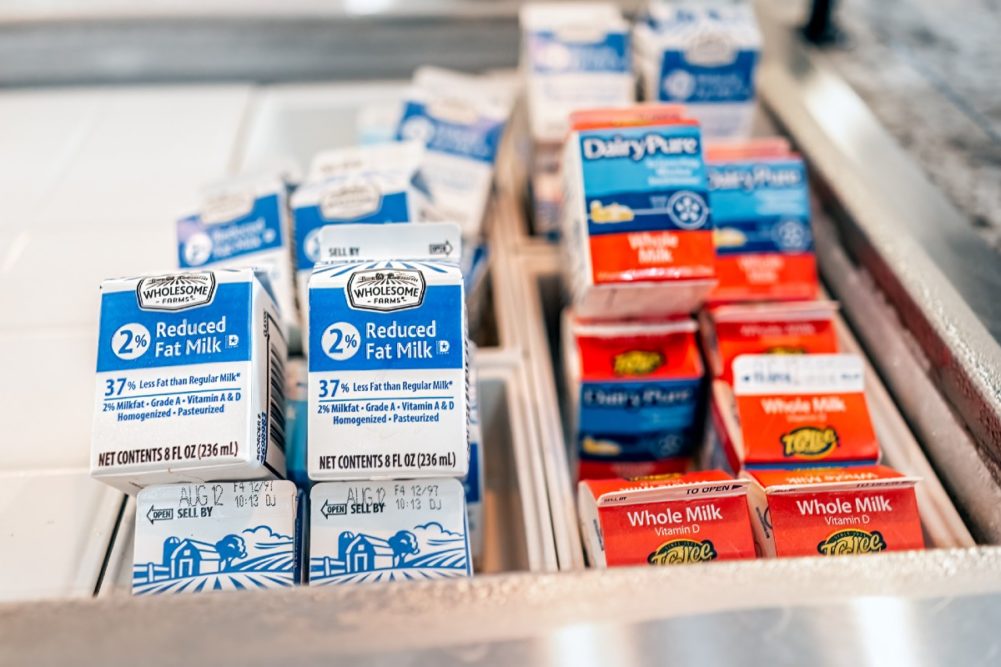CANTON, MICH. — On Wednesday, the International Dairy Foods Association (IDFA) announced the establishment of the Healthy School Milk Commitment on behalf of US milk processors. The pledge by dairy companies commits to delivering milk’s 13 essential nutrients to America’s students while reducing calories and added sugars in flavored milk.
Beginning with the 2025-2026 school year, 37 school milk processors, representing more than 90% of the school milk volume in the US, committed to providing school milk options with no more than 10 grams of added sugar per 8 fluid oz serving, fully consistent with the latest federal Dietary Guidelines for Americans and ahead of current school meal nutrition guidelines established by the US Department of Agriculture (USDA).
“The Healthy School Milk Commitment goes above and beyond federal nutrition guidelines, ensuring that all children in grades K-12 continue to have access to the milk they enjoy with fewer calories and less added sugar,” said Michael Dykes, D.V.M., IDFA president and chief executive officer. “School meals are incredibly important to the health and welfare of our children, and milk is a central building block in school nutrition programs. Milk is the leading source of calcium, vitamin D, and potassium for American children ages 2 to 18, and that is why milk processors continue to step up by providing wholesome, healthy, and nutritious white milk and flavored milk options with 13 essential nutrients that students will consume.”
Flavored milk products such as chocolate milk offered in schools today contain an average of 8.2 grams of added sugar per serving. The Healthy School Milk Commitment combines dairy’s passion for product innovation with a long-standing promise to provide healthy, nutritious dairy options to school kids everywhere. Among milk options available in schools, low-fat flavored milk is the most-consumed beverage for students regardless of grade.
The most recent Dietary Guidelines for Americans report show that children are not receiving enough essential nutrients for growth, development, healthy immune function and overall wellness. Milk is the number one source of protein in the diets of children ages 2 to 11, according to IDFA. Flavored milk options, such as chocolate, vanilla and strawberry milk, are the most consumed beverages within the school meals program, leading to higher program participation, less plate waste, and greater consumption of essential nutrients children need to grow and thrive in school and life.
The 33.8 million meals served daily in public schools provide a variety of healthy foods and beverages, including milk and dairy. In a recent survey by Morning Consult commissioned by IDFA, 88% of parents identify making public school meals healthy and nutritious as a top or important priority. In a poll of more than 500 parents with children in public schools conducted March 17-19, Morning Consult found that 90% of parents with children in public schools expressed agreement that non-fat or low-fat flavored milk should remain an option in public school meals in their community.
“We understand that parents, school nutrition professionals, and pediatricians want to ensure children consume healthy, nutritious foods and beverages in school, and that is why we are excited to make the Healthy School Milk Commitment today,” said Dykes.
To read more about the Healthy School Milk Commitment and to see a full list of the school milk processors who have signed the Commitment, visit www.healthyschoolmilk.org.

